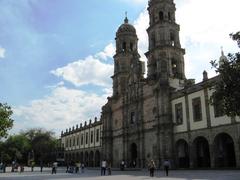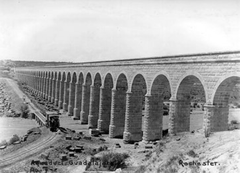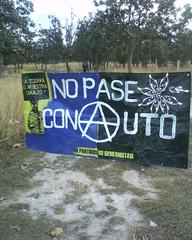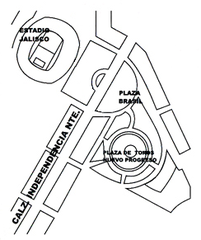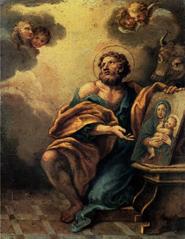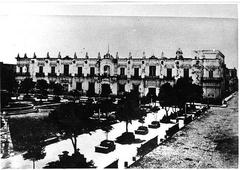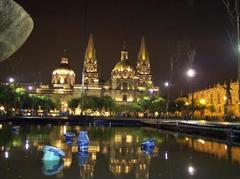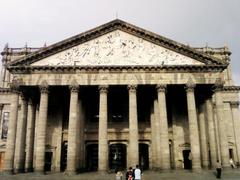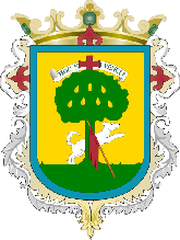Statue of Beatriz Hernández Guadalajara: Visiting Hours, Tickets, and Historical Sites Guide
Date: 04/07/2025
Introduction
Nestled in the heart of Guadalajara’s historic center, the Statue of Beatriz Hernández stands as an enduring tribute to one of the city’s most influential founding figures. Beatriz Hernández’s decisive leadership in 1542 helped secure the permanent settlement of Guadalajara, making her a symbol of civic courage and female empowerment in Mexican history. Created by the acclaimed Tapatío artist Ignacio Garibay Anaya in 1987, the bronze monument is located in Plaza Fundadores—an area surrounded by other iconic landmarks such as the Guadalajara Cathedral and Teatro Degollado (Informador; Milenio).
This comprehensive guide provides detailed information about visiting the statue, including hours, accessibility, nearby attractions, special events, and practical travel tips. Whether you’re a history enthusiast or a cultural explorer, the Statue of Beatriz Hernández offers an engaging point of entry into Guadalajara’s rich heritage.
Table of Contents
- Historical Context and the Founding of Guadalajara
- The Legend and Symbolism of Beatriz Hernández
- The Statue: Artistic Features and Location
- Visiting Hours, Tickets, and Accessibility
- Nearby Attractions and Amenities
- Special Events and Guided Tours
- Safety, Photography, and Visitor Tips
- Frequently Asked Questions (FAQ)
- Summary and Final Thoughts
- References and Further Reading
Historical Context and the Founding of Guadalajara
Guadalajara was permanently founded on February 14, 1542, after several failed attempts due to indigenous resistance and difficult conditions. Beatriz Hernández, wife of Juan Sánchez de Olea, played a prominent role in the final decision to settle in the Valle de Atemajac (Informador). Her leadership was extraordinary for a woman of her time, defying 16th-century gender norms by taking part in public decisions.
During a pivotal assembly, Hernández famously declared, “¡El rey es mi gallo y aquí nos quedamos por las buenas o por las malas!” (“The king is my rooster, and here we stay, for better or worse!”), rallying the settlers to remain and establish the city (Flickr; Milenio).
The Legend and Symbolism of Beatriz Hernández
Beatriz Hernández has become a symbol of civic identity and female agency in Guadalajara’s history. Her story—part legend and part documented history—inspires both scholarly debate and popular celebration (Gaceta CUSUR). The statue, often depicted with Hernández holding a knife or flag, embodies her decisive intervention in the city’s founding and serves as a powerful reminder of women’s contributions in colonial Mexico.
As a feminist icon, Hernández’s legacy is celebrated in civic events and feminist gatherings. Streets and public spaces in Guadalajara bear her name, reflecting her lasting significance in the city’s collective memory (Guadalajarízate; Playas y Plazas).
The Statue: Artistic Features and Location
Physical Description
The bronze sculpture, standing approximately 2.5 meters (8 feet) high (excluding its pedestal), is the work of Ignacio Garibay Anaya and was inaugurated in 1987. The statue portrays Hernández in a dynamic stance, with period-appropriate attire and a determined expression. She holds a knife in her right hand, symbolizing her bold declaration to found the city “for better or worse” (Wikiwand). The monument’s detailed features and commanding posture invite reflection on leadership and resolve.
Location
The statue is located at the edge of Plaza Fundadores, at the intersection of Calle Morelos and Plaza Fundadores in Guadalajara’s Centro Histórico. Nearby, visitors will find the Friso de los Fundadores by Rafael Zamarripa—a monumental relief dedicated to the city’s original settlers. The statue stands apart, emphasizing Hernández’s unique historical role.
Visiting Hours, Tickets, and Accessibility
- Hours: The statue is in an open public plaza and accessible 24 hours a day, seven days a week.
- Tickets: No entry fee or tickets are required.
- Accessibility: The plaza is wheelchair accessible, with wide, smooth walkways and ramps. However, some adjacent streets have cobblestones, so visitors with mobility concerns should plan accordingly.
- Public Transport: The nearest light rail station is Plaza Universidad (Line 2), about a 5-minute walk from the statue. Numerous city buses and taxis pass through the area.
Nearby Attractions and Amenities
Plaza Fundadores is centrally located, placing visitors within walking distance of several major sites:
- Guadalajara Cathedral: An architectural and historical highlight, just a few minutes’ walk away.
- Teatro Degollado: A renowned neoclassical theater, popular for its performances and interiors.
- Rotonda de los Jaliscienses Ilustres: Honoring distinguished citizens of Jalisco.
- Museo Regional de Guadalajara: Featuring exhibits on regional history and culture.
- Hospicio Cabañas: A UNESCO World Heritage Site with murals by José Clemente Orozco (Outlook Travel Guide).
The area is filled with cafés, restaurants, souvenir shops, and public restrooms. The lively plaza often features street performers and artisan markets, especially on weekends.
Special Events and Guided Tours
- Annual Celebrations: The city commemorates its founding every February 14 with ceremonies, cultural performances, and talks held near the statue.
- Guided Tours: Many local tour operators include the statue in their walking tours of Centro Histórico, providing historical context and storytelling in both Spanish and English.
Safety, Photography, and Visitor Tips
- Safety: Centro Histórico is generally safe during the day, with a visible police presence and frequent foot traffic. Remain vigilant after dark and secure personal belongings.
- Photography: Visitors are encouraged to photograph the statue. Early morning and late afternoon provide ideal lighting and fewer crowds.
- Etiquette: Show respect by not climbing on the monument or littering. During cultural events, follow organizers’ or authorities’ directions.
- Weather: Guadalajara’s climate is mild, but summer months can bring afternoon showers. Dress appropriately and bring an umbrella if needed.
- Language & Currency: Spanish is the primary language. Most businesses accept credit cards, but small cash amounts are helpful for vendors.
Frequently Asked Questions (FAQ)
Q: What are the visiting hours for the Statue of Beatriz Hernández?
A: The statue is open 24/7 and free to the public.
Q: Is the site wheelchair accessible?
A: Yes, the plaza has ramps and smooth walkways, though some nearby streets have cobblestones.
Q: Are guided tours available?
A: Yes, many walking tours of Centro Histórico include the statue.
Q: What is the best time to visit?
A: Early mornings and late afternoons for optimal lighting and smaller crowds; February 14 for foundation celebrations.
Q: Can I take photographs?
A: Yes, photography is allowed and encouraged.
Summary and Final Thoughts
The Statue of Beatriz Hernández is a cornerstone of Guadalajara’s historical narrative—honoring a woman whose brave leadership anchored the city’s foundation. Its prominent location in Plaza Fundadores, surrounded by Guadalajara’s architectural and cultural gems, makes it a must-visit for anyone exploring the city’s heritage.
Accessible at all hours and free of charge, the statue provides an inclusive opportunity for reflection on themes of leadership, community, and the vital role of women in history. For an enriching experience, consider visiting during the city’s foundation celebrations or joining a guided tour for deeper insights. Enhance your visit by exploring nearby attractions and using the Audiala app for up-to-date information and self-guided tours.
References and Further Reading
- Guadalajara: Leyendas y realidades que rodean su fundación, 2024, Informador (Informador)
- Personajes históricos de Jalisco: ¿Quién fue Beatriz Hernández?, 2024, Milenio (Milenio)
- ¿Quién fue Beatriz Hernández?, 2024, Gaceta CUSUR (Gaceta CUSUR)
- Statue of Beatriz Hernández, Guadalajara, 2024, Wikiwand (Wikiwand)
- Guadalajara Travel Guide, 2024, Outlook Travel Guide (Outlook Travel Guide)
- Statue of Beatriz Hernández photographic media, 2024, Wikimedia Commons (Wikimedia Commons)
- Flickr image of Statue of Beatriz Hernández, 2024 (Flickr)
